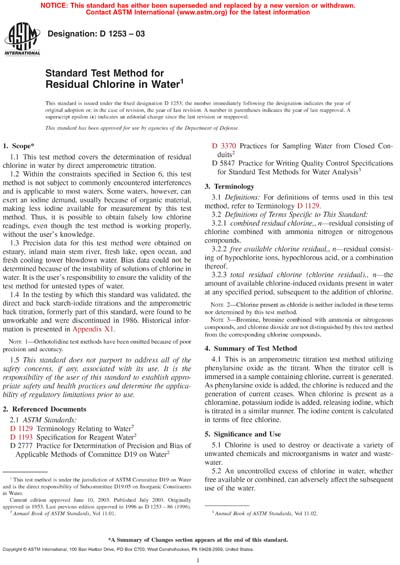Historical
ASTM D1253-03
Standard Test Method for Residual Chlorine in Water
1.1 This test method covers the determination of residual chlorine in water by direct amperometric titration.
1.2 Within the constraints specified in Section 6, this test method is not subject to commonly encountered interferences and is applicable to most waters. Some waters, however, can exert an iodine demand, usually because of organic material, making less iodine available for measurement by this test method. Thus, it is possible to obtain falsely low chlorine readings, even though the test method is working properly, without the user's knowledge.
1.3 Precision data for this test method were obtained on estuary, inland main stem river, fresh lake, open ocean, and fresh cooling tower blowdown water. Bias data could not be determined because of the instability of solutions of chlorine in water. It is the user's responsibility to ensure the validity of the test method for untested types of water.
1.4 In the testing by which this standard was validated, the direct and back starch-iodide titrations and the amperometric back titration, formerly part of this standard, were found to be unworkable and were discontinued in 1986. Historical information is presented in Appendix X1.
Note 1—Orthotolidine test methods have been omitted because of poor precision and accuracy.
1.5 This standard does not purport to address all of the safety concerns, if any, associated with its use. It is the responsibility of the user of this standard to establish appropriate safety and health practices and determine the applicability of regulatory limitations prior to use.
ASTM International [astm]

